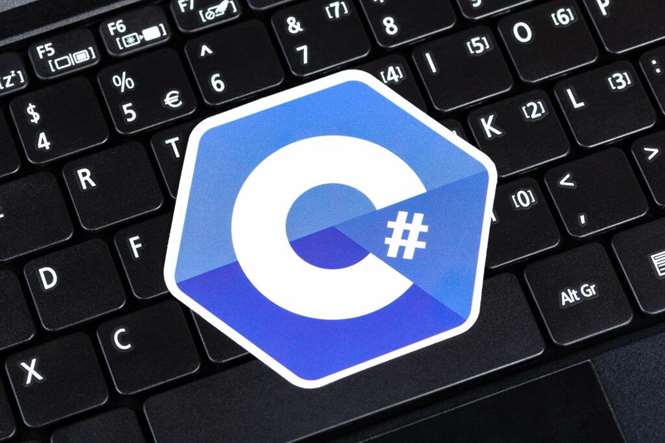Content
Real-time monitoring and reporting help understand and fix problems rapidly. If a modification misbehaves, you must know immediately, before problems cascade and user complaints flood the help desk. A lot of effort is not required of the developers to update to the current version of the main branch. Synopsys CI/CD MAP services provide consultation support to help you develop a maturity action plan continuous integration solution according to the state of your organization’s DevSecOps readiness. If you want to take full advantage of the agility and responsiveness of DevOps, IT security must play a role in the full life cycle of your apps. Organizations that give due weightage to developer experience and can align to Agile, DevOps, and CI/CD frameworks ultimately benefit from higher & more efficient growth experiences.

Many enterprises start by adding CI, and then work their way towards automating delivery and deployment down the road, for instance as part of cloud-native apps. Net Solutions is a strategic design & build consultancy that unites creative design thinking with agile software development under one expert roof. Founded in 2000, we create award-winning transformative digital products & platforms for startups and enterprises worldwide.
CI best practices
Slower builds may indicate a need to increase capacity while an increase in mean fix times might be a sign of a process or cultural issue. Having a shorter time to market doesn’t just help you keep up with the competition. Rapid releases provide an opportunity for product managers and marketing professionals to engage more closely with the development process. Organizations now have realized releasing new products and services faster is crucial to meet competitive demands and earn user’s trust on their offerings. What exactly they need is to use tools or proven practices which allows them to reach to user’s demands easily without compromising quality and reliability. CI/CD practices are the sum of tools and practices to achieve such business goals.
Continuous Integration enables better transparency and farsightedness in the process of software development and delivery. It not only benefits the developers but all the segments of that company. These benefits make sure that the organization can make better plans and execute them following the market strategy. As illustrated in Figure 4, SAFe’s CALMR approach to DevOps enables continuous integration and several practice domains .
Pull requests and code review
This helps guard against technical debt in the form of knowledge silos, where specific engineers are the only stakeholders for certain features of a code base. For example, your developers have more time to focus on larger problems or improving the system and your testers can focus less on small problems so they can find larger problems before being released. Another benefit is keeping your customers happy by preventing them from finding many errors in your product. The task of building a single automated code repository is not an easy feat. They need to build a proper testing suite and spend enormous amounts of time writing test cases instead of developing actual code. This could make them lose faith in completing their projects on time.
- CI helps teams integrate their work, and it facilitates building & testing, focusing on achieving a software-defined cycle.
- Continuous integration can provide the entire team with better insight into the project’s health by generating reports and valuable metrics.
- This transparency and communication utility integrates gracefully with an agile project development workflow.
- Technically, the CI tool is not required per se, like the IDE is not required for software development but it would be significantly harder to implement Continuous Integration without the help of one.
- This data collection process is typically automated and triggered by code changes, ensuring the documentation is automatically updated whenever code changes are merged into the main project.
- If you prefer a self-hosted solution you need to administer your own server.
- Tests are frequently categorized as lightweight or heavyweight, requiring distinct timelines and resources.
Continuous integration can provide the entire team with better insight into the project’s health by generating reports and valuable metrics. Developers can receive feedback as soon as they commit new changes, saving tons of effort in correcting the inevitable issues that arise during development. Finally, CI services can handle almost all of your workflows automatically. If your organization or development team is on the fence about the benefits of continuous integration, here are some reasons why you may want to consider implementing a CI pipeline in your project. Many organizations these days are establishing test automation practices.
Continuous Integration
To implement continuous integration in Agile, you must push the changes to the more extensive system multiple times . Thanks to CI, developers work independently and can create their coding https://globalcloudteam.com/ branch to implement small changes. In addition to the purpose-built CI/CD tools listed here, any tool that powers a DevOps pipeline will likely make up part of the CI/CD workflow.

This means that its projects can be moved to the production environment as well. Continuous integration helps developers merge their code changes back to a shared branch, or “trunk,” more frequently—sometimes even daily. This means testing everything from classes and function to the different modules that comprise the entire app. If automated testing discovers a conflict between new and existing code, CI makes it easier to fix those bugs quickly and often.
Efficient testing & monitoring
With an automated CI/CD pipeline you can ship changes weekly, daily or even hourly. Bugs are reduced when new code is pushed out often and automated tests are run continuously. Because the differences are simpler, it facilitates easier problem isolation. DevOps teams save a massive amount of time and energy since engineers never have to go back to figure out where a piece of code fails to function.
Many organizations choose to stop here, wanting to manually release the production code. Others choose to progress with continuous deployment to leverage DevOps to accelerate business innovation by supporting the entire software development, distribution, and deployment pipeline. Continuous IntegrationContinuous DeploymentContinuous DeliveryContinuous Integration is a software development strategy that is used in DevOps. Continuous deployment (the other possible “CD”) can refer to automatically releasing a developer’s changes from the repository to production, where it is usable by customers. It addresses the problem of overloading operations teams with manual processes that slow down app delivery. It builds on the benefits of continuous delivery by automating the next stage in the pipeline.
The Best GitHub Productivity Tools
With continuous integration at the core of your approach, the unknown becomes known, little by little. When developers work in this way, and it’s more common than you might think, their software isn’t verifiable. Testing manually only considers the functionality of one specific aspect of the system and only at that point in time. We’d try our best, attempt to learn from the experience, and promise to do better next time.

